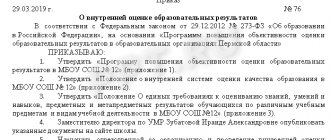What is piecework wages for workers?
The organization chooses its remuneration system at its discretion. There are two main forms of remuneration:
- time-based;
- piecework.
They are rarely used in their pure form, and each of them has several subspecies.
The piecework form of payroll stimulates the productivity and efficiency of employees. The indicator for calculation, depending on the field of activity, can be the number of products produced, the volume of work performed or services provided.
What you need to know with piecework wages is that the employer is obliged to provide the employee with the conditions to fulfill the standard work. For any volume of work performed, the wages paid cannot be lower than the minimum wage.
Accrual of vacation pay, disability benefits and other payments based on average earnings is carried out in accordance with the generally established procedure. The procedure for calculating average earnings does not depend on the form of remuneration chosen by the organization.
Types of piecework-bonus wages (bonus-bonus and others)
The piece-bonus wage system has a number of varieties that take into account the specifics of the employee incentive procedure:
- simple piece-rate bonus, in which bonuses are paid by paying additional remuneration for exceeding labor standards and absence of defects in work;
- progressive piecework, which provides for the establishment of increased prices for work performed in excess of the standards established for it;
- accord-bonus, used to estimate the cost of a set of works performed in a short time, which is based on the calculation of the cost of these works, taking into account, among other things, the amount of bonuses.
The characteristic features of bonuses under such a remuneration system are:
- the possibility of its application only to persons whose work is assessed at established prices (tariffs);
- correlating the possibility of receiving remuneration solely with the performance results of specific employees, and not with the entire team as a whole;
- it is not necessary to pay bonuses regularly, but monthly review of work results is mandatory;
- the predominance of the method of expressing the amount of remuneration as a percentage of the basic price for work;
- the need to apply a regional coefficient to the remuneration established as a percentage of the basic rate, if such a coefficient is valid in the region of work.
Accordingly, establishing bonus rules for piecework-bonus wages means entering into the regulatory document on bonuses:
- descriptions of the types and features of the incentive procedure used;
- the conditions under which it becomes possible to accrue the corresponding remuneration;
- numerical indicators necessary to calculate the amount of bonuses;
- specific algorithms for calculating the amount of incentive additional payments;
- conditions under which an employee entitled to a bonus may lose his remuneration.
For information on how to plan the expenditure of funds on wages, read the article “What does the wage fund include?”
Calculation for direct piecework, piecework-bonus and indirect-bonus systems
Such payroll systems are used if labor standards can be established (for example, the production of one unit of product). The employer must enshrine them in local regulations governing wages. In addition, it is necessary to approve piece rates for fulfilling the norm.
Let us show what piecework wages mean with the calculation formula:
Example:
- for the manufacture of one part the price is set at 1000 rubles;
- 30 pieces were produced in a month.
The employee will be credited:
The enterprise's remuneration system may provide for the payment of bonuses to piece workers:
- for exceeding the plan;
- reduction of defects;
- other indicators.
In this case, the form of salary calculation will be called piecework-bonus. And the monthly salary will be calculated as follows:
For personnel serving the main production, an indirect piecework form of wage calculation can be used. Salaries will depend on the performance of the main employees.
Piece wage options
The piecework form of remuneration provides several options that differ in the way tariffs are calculated:
- Simple;
- Piece-bonus;
- Piece-progressive;
- Indirect piecework;
- Chord.
Simple
The use of simple piecework payment is effective in enterprises where it is easy to introduce individual production accounting. With this payment option, an employee’s salary directly depends on individual quantitative indicators of labor.
An employee's earnings are calculated using the formula:
SZ = T(s) x K,
where SZ is the amount of earnings, T(s) is the piece rate for 1 unit. products, K – the number of units produced during the billing period.
Example
An employee of the postal company, Petrov, received and processed 800 parcels within a month. The employment contract provides for a piece rate for 1 parcel in the amount of 30 rubles.
Accordingly, his salary will be 800 x 30 = 24,000 rubles.
Piece-bonus
The piece-rate payment option provides for the introduction of bonuses for achieving certain qualitative and quantitative production standards.
They can be charged either as a percentage of current tariffs or as fixed amounts. The procedure for awarding bonuses to employees under this remuneration option is regulated by the company's regulations on bonuses.
The formula for calculating earnings here is:
SZ = SZ(pss) + Z(pr),
where SZ (pss) is the amount of earnings in direct piecework form, Z(pr) is the bonus accrued for exceeding the norm established during the reporting period.
Example
The same employee Petrov got a job at another postal company with the same piece rates, but which practices bonuses for employees. The bonus for exceeding the plan is fixed and amounts to 3 thousand rubles. He processed 1,000 parcels per month, exceeding the plan and earning a bonus.
His earnings in this case will be 1000 x 30 + 3,000 = 33,000 rubles.
Piece-progressive
With a piece-rate system, payment tariffs are directly related to
the number of products produced for a certain period. As output increases over a given period (for example, a month), piece rates also increase. Transparency in charging is determined by the presence of a scale for determining the degree of increase in tariffs.
Formula for calculating a worker's total earnings:
SZ = SZ(pss) + SZ(psr),
where SZ is the total amount of earnings, SZ (pss) is the amount of wages according to the direct piecework system (see the formula above), SZ (psr) is the amount of earnings according to the progressive piece rate.
The SZ(psr) indicator is calculated using the formula З(с)+31+З2….+Зn, where Зс is piecework earnings, 31 is a bonus for overfulfillment.
standards of the first level, Z2....Zn - bonuses provided for achieving the next levels on the scale.
Example
Our employee Petrov has again found a new place of work. The postal company where he now works provides not only fixed bonuses for exceeding the plan, but also additional bonuses for issued valuable parcels. This month, Petrov has issued 700 parcels (the plan is 500), earned a fixed bonus of 3 thousand and a bonus for valuable parcels of 1000 rubles. The amount of his earnings according to the direct piecework system will be 700 x 30 = 21,000 rubles, according to the progressive piecework rate - 3000 + 1000 = 4000.
Petrov’s total salary: 21,000 + 4,000 = 25,000 rubles.
Indirect piecework
The indirect piecework form is most often used to calculate payments to auxiliary employees (packers, assemblers, etc.), whose salary depends on the output of the main employees.
In this case, the tariff is determined taking into account the tariff rate of the object of work with which the employee’s activities are related.
Earnings calculation formula:
SZ = T(cd.sd.) x OR,
where T(kd.sd.) is the tariff for indirect piecework work, OR is the volume of output of facilities served by auxiliary workers.
Example
At the same post office there is a loader Ivanov, who unloads parcels issued by Petrov. According to his employment contract, the tariff for indirect piecework work is 20 rubles per parcel. Petrov has issued 700 parcels this month.
Ivanov’s salary will be 20 x 700 = 14,000 rubles.
Piece-progressive form
This type of payroll is used when it is necessary to increase production volumes. It allows employees to receive higher accruals when exceeding established production standards. In this case, the employer sets differentiated prices per unit of manufactured products. The higher the output, the higher the payment per unit of production:
Example:
- for the manufacture of one part within the norm, the price is set at 1000 rubles, if the norm is exceeded, it increases by 10% (1100 rubles);
- the monthly norm is 30 pieces;
- 40 pieces were produced in a month.
The employee will be credited:
How to calculate piecework-bonus wages
A feature of the piecework-bonus system is that in order to calculate wages, an employee needs not only quantitative indicators, but also qualitative ones.
So, wages in this case consist of 2 components:
- earnings for manufactured products;
- additional payments for quality work done (for example, a bonus for exceeding the monthly plan, saving raw materials, reducing the percentage of defects, getting the job done the first time, etc.).
Piecework calculation
When calculating the piecework portion of wages, the value of the labor price expressed per unit of output is multiplied by the volume of actual output. To calculate the price of labor, information is required on the tariff rate, which is differentiated depending on the qualifications of the worker and the standard time/output for the production of a unit of product.
To calculate the piece rate per unit of product, it is necessary to divide the employee’s rate per day, set in rubles, by the daily standard for production. If an employee produces different types of products, when calculating monthly earnings, the cost values for each type are summed up.
Important! Employers can also use ways to encourage workers to do more skilled work. Thus, depending on the rank assigned to an employee, the price of his labor increases as his qualifications increase.
At the same time, in Part 3 of Art. 150 of the Labor Code of the Russian Federation provides for the protection of the interests of an employee if the employer instructs him to perform less qualified work. In this case, the employer will have to pay the employee the inter-grade difference.
Calculation of the premium part
The rules for calculating bonuses established at the enterprise are prescribed in an internal act. Thus, the bonus part of wages can be expressed in absolute or relative values.
Most employers who set additional payments for exceeding the plan for the number of products produced prefer to use coefficients that increase the amount of earnings. More information about the awards is here.
Example
During the month, the employee produced 47 products instead of the planned 43. The plan was exceeded by 9% (47 / 43 × 100 – 100). Therefore, with a set price for 1 manufactured product of 300 rubles. he will receive a salary including a bonus of 9%, which in monetary units will be 15,369 rubles. (47 × 300 × 1.09).
Chord payroll system
The peculiarity is that the price is set not for individual works or units of manufactured products, but for the performance of a certain set of works. This form of remuneration is used when work is performed in teams. The chord task states:
- volume and list of work to be performed by the team;
- the cost of this scope of work;
- deadlines;
- a method of distributing payments among team members, for example, based on working hours.
This method is used for construction, installation and repair work. Bonuses may also be provided for achieving certain performance indicators.









